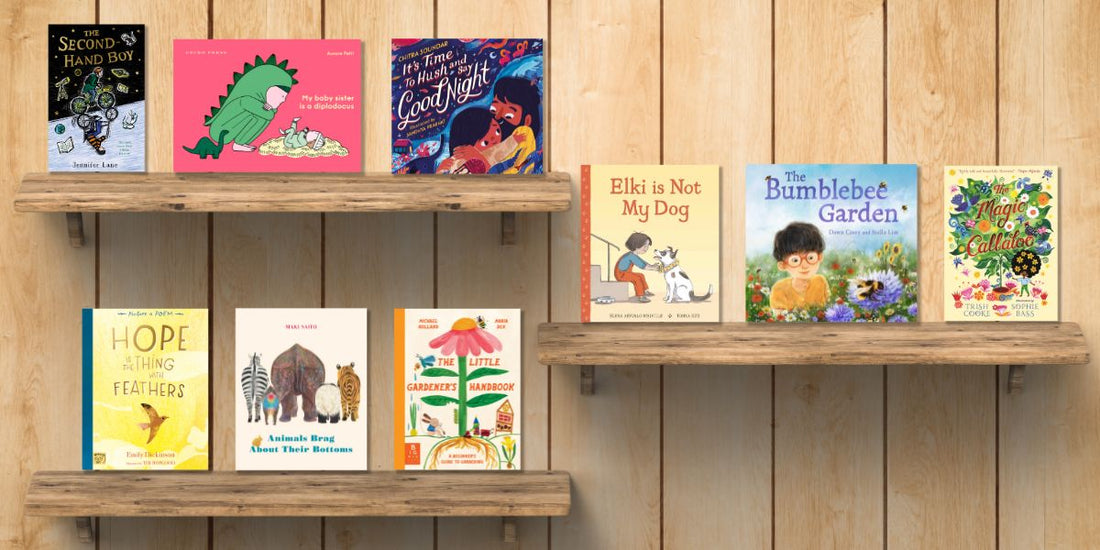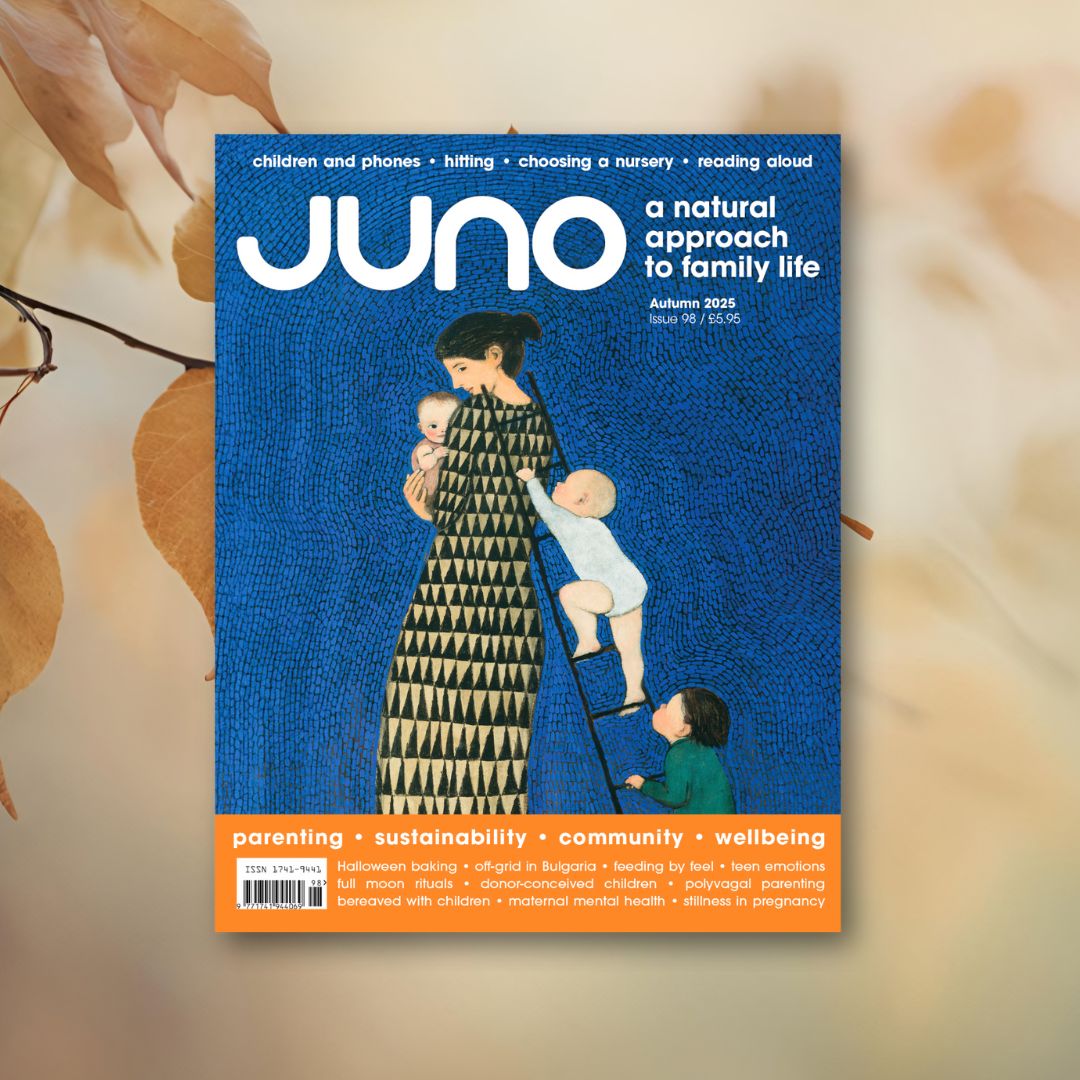 The Second-hand Boy
The Second-hand Boy
By Jennifer Lane, UCLan Publishing
This is an intriguing middle-grade novel about a boy called Billy whose feelings of not fitting in are compounded when best friend Marty moves away. Bullying at school and his mum’s mental health challenges weigh ever more heavily on him. Billy discovers a copy of Tom’s Midnight Garden, which has been annotated by its previous owner, James. Billy starts to get to know James by the notes he leaves in the margins, until, one day, he appears to him in real life. Events lead Billy into an exploration of parallel universes, imaginary friends and unexpected relationships, as he battles with his demons to understand what’s real and to find his place in the world. A tense and thought-provoking read.
 My Baby Sister is a Diplodocus
My Baby Sister is a Diplodocus
By Aurore Petit, Gecko
The child in this book is so excited when his baby sister arrives. He wants to show her his room, his toys, and where she’ll sleep. But things soon become tense at home when he keeps getting it ‘wrong’. “No!” his mum says when he offers the baby a glass of water and balances blocks on her head. The boy changes into his dinosaur suit and roars. But when his parents recognise how he’s feeling, show him love and give him space to get to know the baby himself, things start to work themselves out. There is very little text in this book, but the pictures tell the story beautifully. They communicate what a huge transition it is to suddenly become the older sibling.
 It’s Time to Hush and Say Goodnight
It’s Time to Hush and Say Goodnight
By Chitra Soundar, illustrated by Sandhya Prabhat, Walker Books
Inspired by ancient Indian lullabies, this lilting story follows a father and his child as they journey across starry skies and down merry streams towards peaceful slumber. Going to sleep can sometimes be scary for children, and I love the way the father’s words reassure his child, banishing worries and bringing a sense of calm that makes way for sleep. There’s a dreamlike quality to the illustrations and the lyrical, repetitious text with the beautiful refrain – “Count the stars that twinkle bright. It’s time to hush and say good night” – has just the rhythm to lull you off to sleep.
 Elki is Not My Dog
Elki is Not My Dog
By Elena Arevalo Melville, illustrated by Tonka Uzu, Scallywag Press
This is a gorgeous story of belonging. A group of children who live in the same block of flats befriend a stray dog who turns up in their neighbourhood one day. Though Elki is not allowed in their building, the children play with her outside all year round. When Elki doesn't appear one day, they track her down and find her injured. They carry her into the building and care for her and, in the process, they win over the adults in the tower block. I love the way it is the children who take action in this story, who demonstrate the power of kindness and community. The warm and gentle illustrations capture the friendship between the children and Elki beautifully.
 The Bumblebee Garden
The Bumblebee Garden
By Dawn Casey, illustrated by Stella Lim, Floris Books
Over the course of a year, Grandpa and Ben observe the bees in their garden. They see a queen bee looking for somewhere to nest in early spring, and, a while later, they see her collecting pollen to feed her larvae. Grandpa explains that when they’ve eaten enough, each larva will spin a cocoon from which they will emerge as a bee, and sure enough, in summer, Ben and Grandpa see lots of bees in the garden. Through watching them, Ben learns more about how he can help them, and makes connections between the bees’ behaviour and the way his family look after each other. It’s a delightful story and a lovely way to learn about the life cycle of bees.
 The Magic Callaloo
The Magic Callaloo
By Trish Cooke, illustrated by Sophie Bass, Walker Books
This book is truly magical! Based on Rapunzel and inspired by stories of enslaved Africans, it tells of Lou, a long hoped for baby, who is captured as a girl by a wicked and greedy man and forced to work on his farm. Very much written in the style of fairy tale, the story is fraught with peril. Lou is a brave and strong heroine, and she is helped to freedom by a wise old woman who plaits a map of her escape route into the tresses of her hair. In her author’s note, Trish Cooke describes the way enslaved Africans used hairstyles in this way to escape from their enslavers, “with cornrows representing the roads they should follow”. As in traditional tales, the language makes use of rhythm and repetition, and with vibrant illustrations on every page, the story is a pleasure to read aloud.
 Hope is the Thing with Feathers
Hope is the Thing with Feathers
By Emily Dickinson, illustrated by Tim Hopgood, Magic Cat Publishing
This highly illustrated edition of Emily Dickinson’s famous poem introduces young children to her work. The bird is a wonderfully evocative and visual metaphor for hope, whose sweet tune can be heard “in the chilliest land – / And on the strangest Sea”. It’s such a powerful idea that, even in extremity, hope “perches in the soul”, and Tim Hopgood’s soaring illustrations of the brave little bird help make it accessible for children.
 Animals Brag About Their Bottoms
Animals Brag About Their Bottoms
By Maki Saito, Greystone Kids
I love this board book for the under-2s. The illustrations are stunning. Though stylised, they are quite true-to-life and incongruous with the humour, which makes the book all the more funny. There’s a body positive message here in that each animal is proud of their bottom and its particular qualities – round, big, fluffy, stripy, covered in spikes. My favourites are the Japanese macaque and the mandrill who ask, “Did our faces copy our bottoms? Or did our bottoms copy our faces?” There’s a helpful list at the back of the animals featured, in case you have difficulty identifying these species from their rear ends.
 The Little Gardener’s Handbook: A Beginner’s Guide to Gardening
The Little Gardener’s Handbook: A Beginner’s Guide to Gardening
By Michael Holland, illustrated by Maria Dek, Big Picture Press
This is a lovely first book about gardening. With big illustrations and easy-to-digest text, it introduces children to plants, explains how they grow and why they’re important, before showing them how to begin growing fruit, vegetables and flowers. It also suggests ways to welcome wildlife and natural ways to discourage pests. There are simple growing ideas, each with just a few easy steps, so children will be able to have a good go at them independently. If you’re a reluctant adult gardener (like me), you might have wondered how to inspire a love of growing in your little ones. This book is a really accessible way for beginners of all ages to get started.
____
 Reviews by Alice Ellerby
Reviews by Alice Ellerby
Published in issue 89. Accurate at the time this issue went to print.






